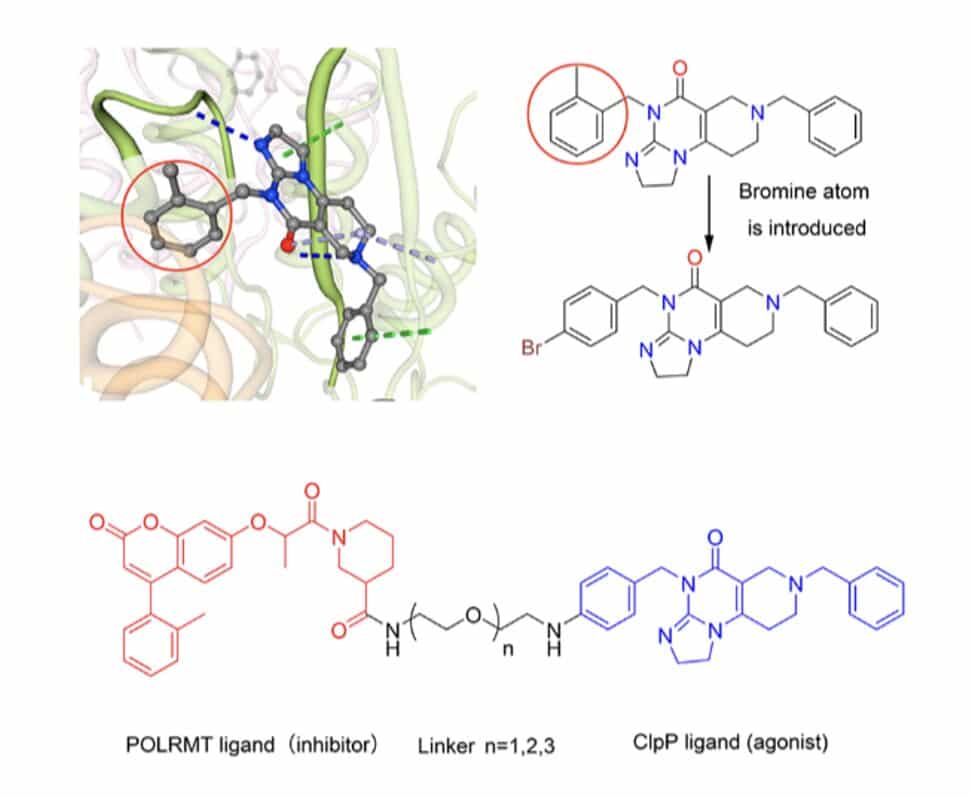
Targeted protein degradation (TPD) in eukaryotic cells relies on either ubiquitin-proteasome or lysosomal systems, which is powerless against target proteins in membrane organelles lacking proteasomes and lysosomes, such as mitochondria. The newly developed mitochondrial protease targeting chimera (MtPTAC) can specifically hydrolyze target proteins inside mitochondria.
Wang et al. have reported the development of a mitochondrial protease targeting chimera (MtPTAC) that can specifically hydrolyze target proteins inside mitochondria. The authors have validated the effectiveness of MtPTAC in inducing target protein degradation both in vivo and in vitro, using mitochondrial RNA polymerase (POLRMT) as a model protein.
The MtPTAC was designed as a bifunctional small molecule that can bind to mitochondrial caseinolytic protease P (ClpP) at one end and target protein at the other. Mechanistically, MtPTAC activates the hydrolase activity of ClpP while simultaneously bringing target proteins into proximity with ClpP.
For validation of POLRMT degradation, the researchers used quantitative PCR with reverse transcription (qRT-PCR) assay to detect the RNA level of POLRMT before and after treatment with MtPTAC. The assay indicated that MtPTAC did not decrease the RNA level of POLRMT at the concentration where the POLRMT protein level was significantly suppressed. This confirmed the effect of MtPTAC on protein reduction at the posttranslational level. The synthesized MtPTAC can effectively induce target protein degradation and the degradation efficiency is closely related to the PEG linker length.
This work demonstrates the powerful proteolytic ability and antitumor application prospects of MtPTAC, which could lead to the development of new therapies for diseases caused by mitochondrial dysfunction.
Paper: https://lnkd.in/e4ePQ6cD
Crystal structure of ClpP in complex with ONC201: https://lnkd.in/ezbSiGZn